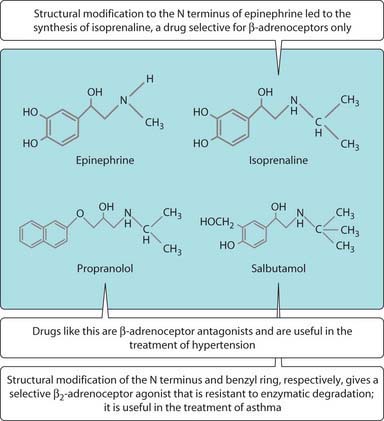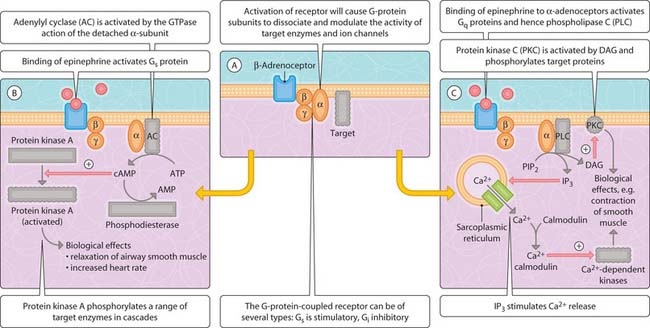1 Principles of drug action
Drugs
Drugs are chemicals that alter the biological response of cells. Their chemical structure often mimics a natural substance in the body but they can be chemically distinct; in either case they selectively target receptors (Fig. 3.1.1). The binding of a drug to its receptor is the first step in a series of complex reactions inside the cell that ultimately evokes a therapeutic effect and, therefore, provides a ‘magic bullet’ for the treatment of disease. The drug can either initiate an endogenous process or inhibit the action of endogenous hormones and neurotransmitters.
Receptors
G-protein-coupled receptors
This large protein family comprises cell surface receptors (e.g. β-adrenoceptor, muscarinic receptor) that are activated by hormones and neurotransmitters. A characteristic feature of these receptors is that they contain seven membrane-spanning domains and their activation leads to the subsequent synthesis of intracellular second messengers, which activate numerous proteins within cells as an amplification cascade (Fig. 3.1.2).
< div class='tao-gold-member'>
Stay updated, free articles. Join our Telegram channel

Full access? Get Clinical Tree






